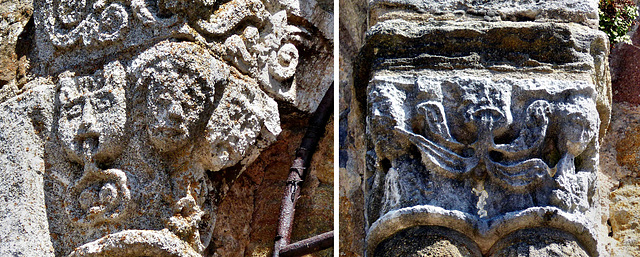Châteaumeillant - Saint-Genès
Châteaumeillant - Saint-Genès
Châteaumeillant - Saint-Genès
Châteaumeillant - Saint-Genès
Châteaumeillant - Saint-Genès
Châteaumeillant - Saint-Genès
Châteaumeillant - Saint-Genès
Châteaumeillant - Saint-Genès
Châteaumeillant - Saint-Genès
Châteaumeillant - Saint-Genès
Ainay-le-Vieil - Saint-Martin
Ainay-le-Vieil - Saint-Martin
Ainay-le-Vieil - Saint-Martin
Cérilly - Saint-Martin
Cérilly - Saint-Martin
Cérilly - Saint-Martin
Cérilly - Saint-Martin
Ygrande - CAFE
Ygrande - Saint Martin
Ygrande - Saint Martin
Ygrande - Saint Martin
Ygrande - Saint Martin
Bourbon-l'Archambault - Saint-Georges
Châteaumeillant - Saint-Genès
Châteaumeillant - Saint-Genès
Châteaumeillant - Saint-Genès
Saint-Jeanvrin - Saint-Georges
Saint-Jeanvrin - Saint-Georges
Saint-Jeanvrin - Saint-Georges
Saint-Jeanvrin - Saint-Georges
Saint-Jeanvrin - Saint-Georges
Saint-Jeanvrin - Saint-Georges
Saint-Jeanvrin - Saint-Georges
Le Châtelet - Notre-Dame-de-Puyferrand
Le Châtelet - Notre-Dame-de-Puyferrand
Le Châtelet - Notre-Dame-de-Puyferrand
Le Châtelet - Notre-Dame-de-Puyferrand
Le Châtelet - Notre-Dame-de-Puyferrand
Le Châtelet - Notre-Dame-de-Puyferrand
Le Châtelet - Notre-Dame-de-Puyferrand
La Celle - Saint-Blaise
La Celle - Saint-Blaise
La Celle - Saint-Blaise
La Celle - Saint-Blaise
La Celle - Saint-Blaise
Location
See also...
Keywords
Authorizations, license
-
Visible by: Everyone -
All rights reserved
-
186 visits
Châteaumeillant - Saint-Genès


Saint-Genès, erected in the 11th and 12th century, was the church of the priory Saint-Etienne, dependent from the important Abbaye Notre-Dame in Déols. This abbey, now in ruins, had been founded in 917 and developed into one of the most powerful regional institutions. It was one of the first in the Cluniac network. Odo of Cluny (+ 942) was abbot of three monasteries: Cluny, Massy and Deols. This is important, as Saint-Genès has architectural parralells to Cluny II.
The building got severely damaged, when Louis VII (aka "Louis le Jeune", 1. husband of Eleanor of Aquitaine) burnt down the town in 1152 during a feud with Abbo II de Déols, a supportet of Henri Plantagenêt (aka Henry II, "Curtmantle", 2. husband of Eleanor of Aquitaine). In 1569 the Huguenots set fire here - and many restorations followed that. During the French Revolution the bell tower was destroyed and the church became a "Temple of Reason".
The walls of the nave are embellished with many sculpted capitals and corbels.
A day before, I had visited La Celle, as well a priory dependent from the abbay Notre-Dame de Déols, just 35kms northwest. There I had come across the icon of "enormous tongues". Here are two examples from Saint-Genès. What does these tongues stand for? Still today a "split tongue" is connected to lying.
The building got severely damaged, when Louis VII (aka "Louis le Jeune", 1. husband of Eleanor of Aquitaine) burnt down the town in 1152 during a feud with Abbo II de Déols, a supportet of Henri Plantagenêt (aka Henry II, "Curtmantle", 2. husband of Eleanor of Aquitaine). In 1569 the Huguenots set fire here - and many restorations followed that. During the French Revolution the bell tower was destroyed and the church became a "Temple of Reason".
The walls of the nave are embellished with many sculpted capitals and corbels.
A day before, I had visited La Celle, as well a priory dependent from the abbay Notre-Dame de Déols, just 35kms northwest. There I had come across the icon of "enormous tongues". Here are two examples from Saint-Genès. What does these tongues stand for? Still today a "split tongue" is connected to lying.
(deleted account) has particularly liked this photo
- Keyboard shortcuts:
Jump to top
RSS feed- Latest comments - Subscribe to the comment feeds of this photo
- ipernity © 2007-2024
- Help & Contact
|
Club news
|
About ipernity
|
History |
ipernity Club & Prices |
Guide of good conduct
Donate | Group guidelines | Privacy policy | Terms of use | Statutes | In memoria -
Facebook
Twitter

Sign-in to write a comment.